Stress Massage: Benefits, Techniques, and Relief
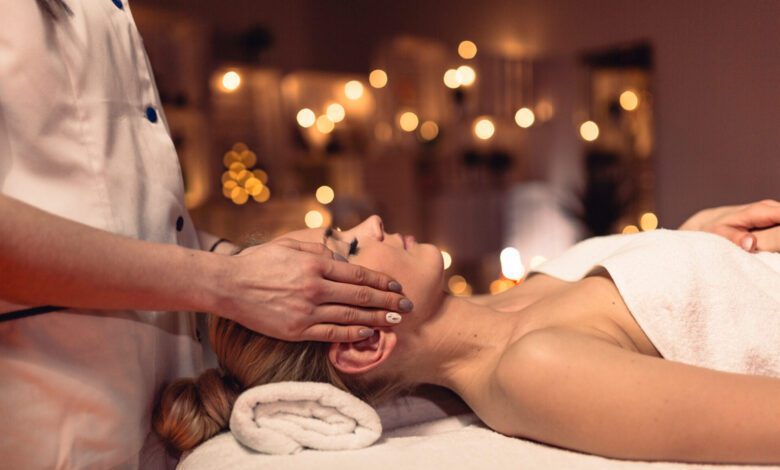
In today’s fast-paced world, the word ‘stress’ is all too familiar to many. From bustling city streets to the digital overload we face daily, our minds and bodies often yearn for a moment of reprieve. Enter stress massage, a potent solution offering myriad benefits from tension reduction to anxiety relief.
Ever wondered what makes stress massage stand out? Is it the techniques? The focus on relaxation? Or perhaps its transformative power on both the mind and body? Let’s dive deep, answering some burning questions and highlighting why this therapy has garnered attention worldwide.
1. Introduction: The Power of Stress Massage

Stress massage isn’t just another entry in the vast world of massages. It’s a targeted therapy designed specifically for the strains and pressures of modern life. Many report an overwhelming sense of relief and relaxation after just one session, with benefits that extend far beyond the immediate moment.
- A haven for the mind: Helps combat anxiety and depression.
- Physical relief: Aids in tension reduction and relaxation.
- Emotional balance: This can promote a sense of well-being and calm.
1.1. What is Stress Massage?
Stress massage is a therapeutic practice, often combining a blend of different techniques to tackle both physical tension and mental strain. Unlike generic massages, it zeroes in on the specific pressure points and regions burdened by the weight of daily stresses.
- Holistic approach: Focuses on both body and mind.
- Adaptable techniques: Customized to individual stress patterns.
- Multifaceted benefits: From improved sleep to a sharper mind.
Stress massage is rooted in the ancient art of touch therapy. Over centuries, different cultures have recognized and utilized the power of touch to alleviate pain, bring comfort, and promote holistic well-being.
1.2. The Importance of Addressing Stress in Modern Times
Our ancestors might not have faced the challenges of constant emails, social media, or grueling commutes, but stress is no modern invention. Today, however, the stakes have risen. Our health, relationships, and even longevity are compromised by unaddressed stress.
- Physical ramifications: High blood pressure, fatigue, and more.
- Mental consequences: Anxiety, depression, and cognitive decline.
- Interpersonal challenges: Strained relationships and social withdrawal.
Given the magnitude of its impact, seeking ways like stress massage therapy to manage and reduce stress isn’t just advisable—it’s essential.
1.3. Stress Massage vs. Other Massage Types
What distinguishes stress massage from other therapeutic massages? While each massage type serves its unique purpose, stress massage primarily aims at mental and emotional relief, along with physical relaxation.
- Swedish massage: Focuses on muscle relaxation and increased blood circulation.
- Deep tissue massage: Targets muscle knots and specific problem areas.
- Stress massage: Concentrates on overall tension reduction, mental relief, and holistic wellness.
To clarify, while all massages can bring relief, stress massage uniquely combines techniques tailored to combat the stressors prevalent in our contemporary lives.
Stress massage stands as a beacon of hope for those submerged in the tempests of daily pressures. Whether you’re seeking techniques for relaxation, hoping to uncover the benefits of stress massage therapy, or just pondering over “What massage is best for stress?”, understanding its essence can pave the path to a more relaxed and harmonious life.
If you’ve found this article enlightening, don’t forget to explore other types of massage therapies and find the one that suits you best. Whether you’re in search of relief, relaxation, or overall well-being, there’s likely a perfect massage waiting just for you.
2. The Comprehensive Benefits of Stress Massage
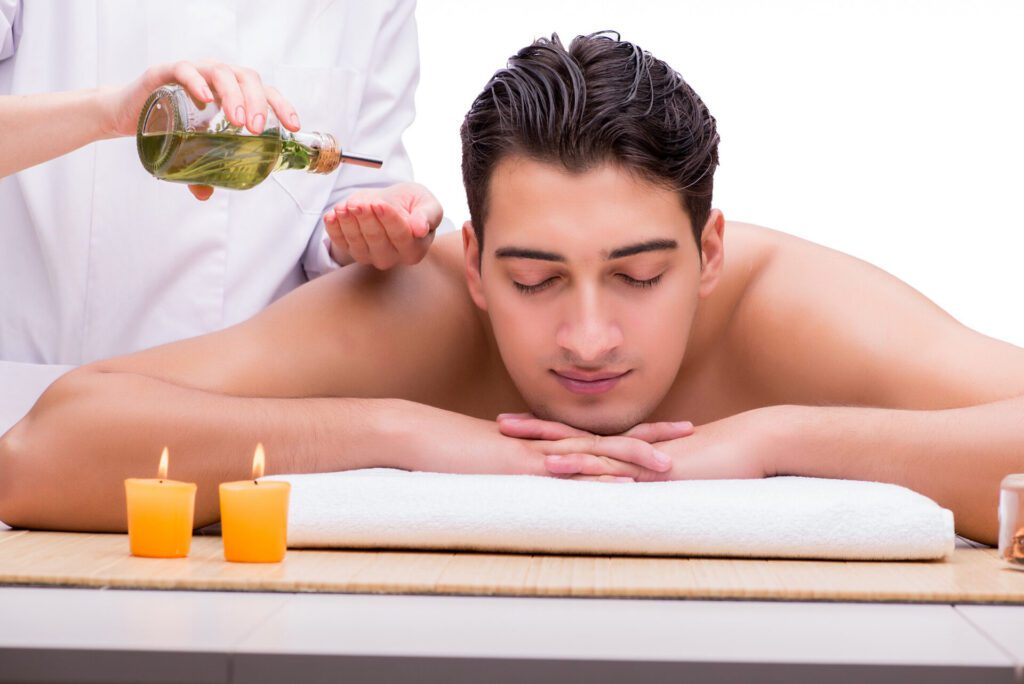
Imagine coming home after a long day, your muscles aching, your mind racing. Now imagine being able to melt away that tension through a specialized form of therapy, specifically designed to target and alleviate stress. This, in essence, is the promise of stress massage.
- Enhances relaxation
- Boosts mood
- Elevates energy levels
- Reduces muscle tension
Sure, the idea of a massage is generally associated with a luxurious spa day, but the benefits extend far beyond simple indulgence. Embracing regular stress massage sessions can be a game-changer for overall well-being.
- Increases circulation
- Enhances sleep quality
- Supports immune function
- Improves skin health
2.1. Stress Massage Benefits: Holistic Wellness
When we talk about stress massage and holistic wellness, it’s not just about addressing physical symptoms. It’s about treating the entire being: mind, body, and soul.
- Balances emotional state
- Aids in mental clarity
- Enhances spiritual connection
The term “holistic” refers to considering the whole person, and that’s precisely what stress massage aims to achieve. By applying specific techniques tailored to individual needs, it nurtures not only the body but also the mind.
- Reduces mental fatigue
- Supports the body’s natural healing
- Encourages mindfulness and presence
2.2. Massage for Anxiety and Depression: Healing the Mind
The modern world seems to move at a breakneck pace, leading many to grapple with anxiety and depression. But did you know that stress massage can act as a balm for such mental health concerns?
- Eases symptoms of anxiety
- Calms the nervous system
- Encourages production of “feel good” hormones
There’s a profound connection between our physical bodies and our emotional state. The gentle touch involved in massage, specifically tailored for relief, can significantly improve mood and counteract feelings of sadness or desolation.
- Creates a safe space for emotional release
- Boosts serotonin and dopamine levels
- Reduces levels of the stress hormone cortisol
2.3. Physical Advantages: Tension Reduction and Beyond
Of course, while the mental and emotional advantages of stress massage are noteworthy, let’s not forget about its primary domain: the body. The benefits extend far beyond mere tension reduction.
- Alleviates muscle pain
- Enhances joint flexibility
- Improves posture
Perhaps you’re thinking, “What massage is best for stress?” The answer is a personalized stress massage. This therapy targets specific pain points, ensuring maximum relief and overall physical health improvement.
- Boosts blood circulation
- Encourages lymphatic system function
- Detoxifies the body
In conclusion, there’s a world of good waiting for you in the realm of stress massage. Whether you’re seeking relaxation, mental clarity, or physical rejuvenation, this form of therapy holds the key. So, next time you feel the weight of the world on your shoulders, remember that relief is just a massage away.
Are you ready to experience the myriad benefits of stress massage? Why not find a qualified practitioner in your area today? Dive into the world of relaxation, holistic wellness, and rejuvenation. Because you deserve it.
3. Diving into Stress Massage Techniques
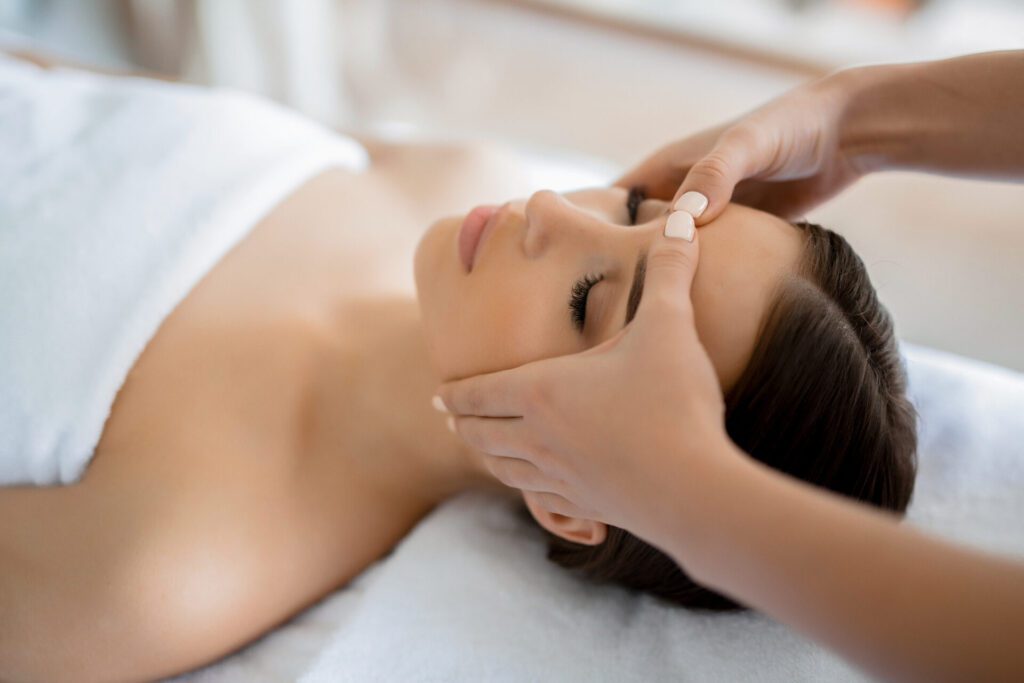
Ah, stress. An unwelcome visitor in most of our lives. What if I told you that there’s an age-old technique that’s been melting away tension for centuries? Stress massage is that magical solution. Here’s what you need to know:
- Understanding the Technique: Stress massage is more than just kneading and pressing. It’s about targeting specific points in the body where tension accumulates.
- Benefits: Beyond relief, the benefits of stress massage therapy are multifold. It aids in anxiety reduction, mitigates symptoms of depression, and enhances overall well-being.
And the best part? There are numerous techniques tailored to various needs.
3.1. Stress Massage Techniques for Relaxation
Imagine this: soft candlelight, soothing music, and skilled hands working wonders on your tired muscles. Stress massage techniques for relaxation are all about creating an environment of utter peace and tranquility.
- Deep Tissue Massage: This technique dives deep, targeting layers of muscle and connective tissue. It’s ideal for chronic pain and tension.
- Swedish Massage: A lighter technique, it involves long strokes, kneading, and deep circular movements. It’s the best massage for stress and anxiety for those new to the massage world.
But remember, the key is consistency. How often should I get a massage for stress, you ask? For maximum benefits, consider making it a bi-weekly or monthly ritual.
3.2. Steps to Perform Effective Stress Massage
Considering a self-massage for stress relief? Here’s a basic guide to get you started:
- Set the Ambiance: Dim the lights, play calming music, and ensure the room is comfortably warm.
- Choose an Oil: Stress massage oil, like lavender or chamomile, can enhance the experience. Himalaya stress relief massage oil is a popular choice for many.
- Techniques: Use a mix of long strokes, kneading, and pressure point activation. Don’t forget areas like the hands and feet!
And there you have it! With these steps, you can give yourself a relaxing massage at home.
3.3. Specialized Techniques: Hand, Head, and Neck Massage
Focusing on specific body parts can offer targeted relief. Ever had a stress headache? A head massage can work wonders.
- Hand Massage to Relieve Stress: Our hands are constantly in use, typing, cooking, and more. Gentle circular movements on the palms and fingers can be very relaxing.
- Head Massage to Relieve Stress: Using fingertips, apply gentle pressure on the scalp, moving in small circles. This can also boost blood circulation.
- Neck Massage for Stress Relief: Many carry tension in the neck. Gentle kneading and pressure point techniques can provide relief.
Incorporate these into your massage routine, and you’ll be saying bye-bye stress in no time!
In Conclusion…
Stress is a persistent foe, but armed with the right techniques, we can keep it at bay. From specialized massages to self-applied therapies, there’s a world of relaxation techniques awaiting discovery. So, the next time stress knocks on your door, invite it in for a massage! Feeling inspired? Why not search “stress massage near me” and book your session today? After all, there’s no time like the present to prioritize your well-being.
4. How Stress Massage Offers Relief
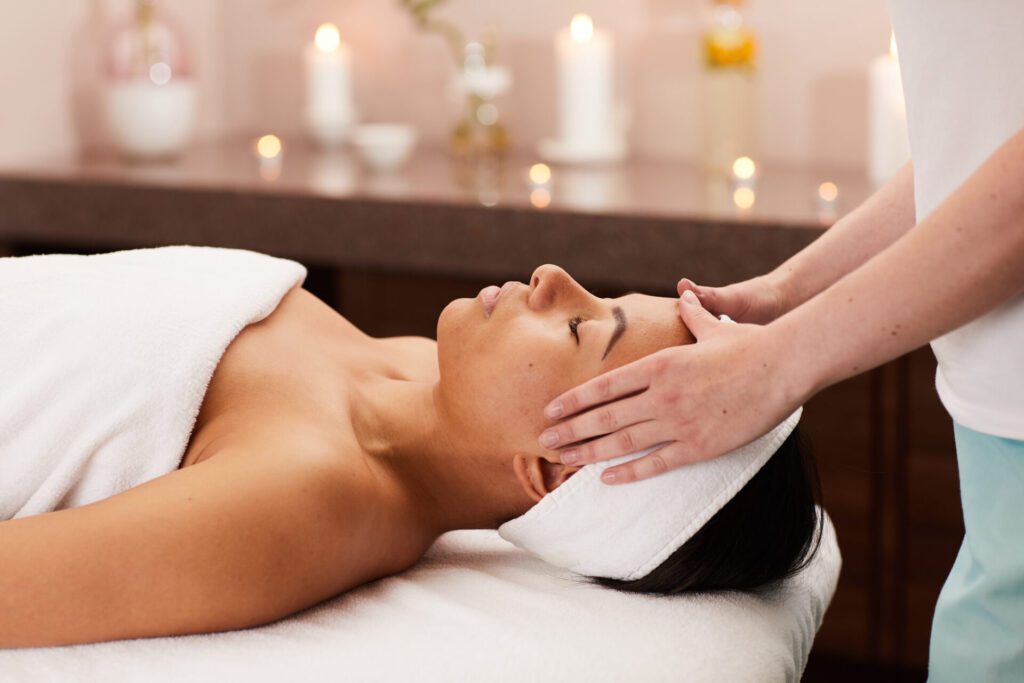
In today’s high-pressure world, stress has become an unwelcome guest in many of our lives. We often hear about various methods to combat it, but did you know that a stress massage can be a key player in the battle against everyday anxieties? Yes, stress massage isn’t just about pampering; it’s a therapeutic strategy designed to alleviate accumulated tensions in your body. With trained hands and focused techniques, these massages can literally knead away your worries.
- Why is it effective? As your muscles tense up under stress, a good massage helps in relaxing them.
- Immediate Benefits: You feel relaxed and rejuvenated right after a session.
- Long-term Benefits: Regular stress massages can lead to better sleep patterns and reduced anxiety levels.
Massage isn’t just about relaxation; it’s also a potent weapon in the battle against persistent tension. From deadlines at work to challenges at home, stressors can cause both physical and mental strain. However, through specific massage techniques, we can combat this tension. Stress massage focuses on the areas of your body that are most affected by stress, like the neck, back, and shoulders, bringing instant relief.
- Pain Reduction: Tense muscles often cause pain, which a stress massage can address directly.
- Increased Flexibility: The massage can also increase the flexibility of your joints, making movement more comfortable.
4.1. How Stress Massage Helps in Tension Relief
Imagine the sheer relief of having tight knots in your muscles eased and released. That’s precisely what a stress massage achieves. By applying pressure to specific points of tension, known as trigger points, these massages help in tension reduction. When these trigger points are targeted, there’s an immediate sense of relaxation and relief.
- Improved Blood Circulation: Enhanced circulation helps flush out toxins and brings in fresh oxygenated blood.
- Mental Relaxation: As the physical tension eases, you’ll also find a reduction in the feelings of anxiety and depression.
The benefits of stress massage therapy go beyond just immediate relief. Over time, regular sessions can result in a marked decrease in chronic pains, improved posture, and even enhanced mental clarity. Think of these sessions as an investment in your overall well-being.
- Sustained Benefits: Unlike some treatments that offer only temporary relief, the benefits of stress massage can last for days or even weeks.
- Holistic Approach: It doesn’t just address physical symptoms but also impacts emotional and psychological well-being.
4.2. The Science Behind Stress Relief Through Massage
Have you ever wondered what’s happening within your body during a stress massage? It’s a beautiful ballet of biological responses. When a massage therapist works on your tense muscles, it triggers the release of endorphins, the body’s natural painkillers. Moreover, the massage reduces the level of stress hormones, such as cortisol.
- Neurotransmitter Production: Massage can stimulate the production of serotonin and dopamine, neurotransmitters related to happiness and relaxation.
- Lymphatic Boost: Massage boosts the lymphatic system, aiding in the removal of toxins from your body.
Additionally, the pressure exerted during a massage leads to increased blood flow. This enhanced circulation not only helps in delivering more nutrients to muscle cells but also aids in flushing out waste products. It’s a holistic approach that benefits both the body and the mind.
- Muscle Recovery: Improved blood flow can aid in faster muscle recovery after strenuous activities.
- Skin Benefits: The increased circulation can result in healthier, glowing skin.
4.3. Comparing Stress Relief Massage vs. Relaxation Massage
While both stress relief massage and relaxation massage aim to ease the body and mind, their approaches and results differ. Stress relief massage is more targeted, addressing specific areas of tension, while relaxation massage takes a more generalized approach, focusing on overall relaxation.
- Depth of Pressure: Stress relief massage usually involves deeper, more concentrated pressure, whereas relaxation massage employs gentler strokes.
- Purpose: While the main aim of relaxation massage is overall well-being, stress massage specifically targets tension areas.
However, both types of massages have their merits. Which one is best for you depends on your specific needs. If you’re looking to alleviate specific pain points, a stress relief massage might be more beneficial. On the other hand, if you’re simply looking to unwind and relax, a general relaxation massage is ideal.
- Duration: Typically, stress massages can be shorter, focusing on problem areas, whereas relaxation massages can be longer, addressing the whole body.
- Outcome: While both leave you feeling refreshed, stress massages often provide a more noticeable relief in areas of tension.
In conclusion, don’t underestimate the power of a good massage. It’s more than just a luxury; it’s a way to reset, refresh, and rejuvenate both your body and mind. So, the next time you’re feeling overwhelmed, maybe it’s time to book a stress massage and let the experienced hands of a therapist work their magic.
5. The Art of Self-Massage for Stress Relief
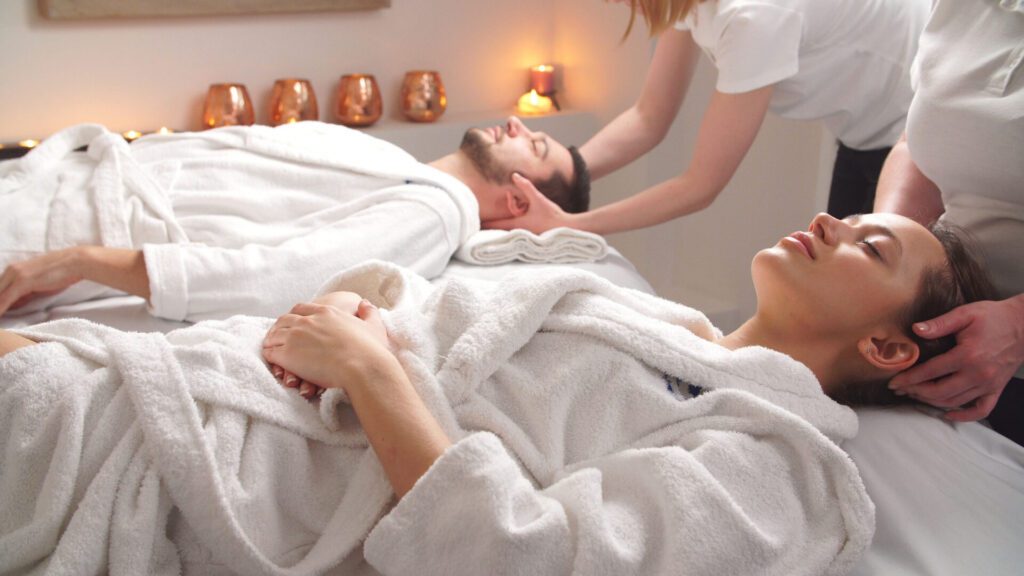
Feeling the weight of the world on your shoulders? Self-massage might just be the therapy you didn’t know you needed. Now, before you question the efficacy of a self-administered massage, let’s dive into its benefits:
- Tension Reduction: Massaging tense areas helps in loosening tightened muscles, aiding in relaxation.
- Anxiety and Depression: Gentle massage can release endorphins, reducing symptoms of anxiety and depression.
- Enhanced Blood Flow: Proper circulation can lead to decreased muscle soreness and general body fatigue.
Now, how do you start with this art? Easy. Set a mood. Dim the lights, play some soft music, and let your hands do the talking.
5.1. Self-Massage Techniques for Stress
Self-massage is not about achieving the perfect technique but finding what feels good for you. Start by applying gentle pressure using your fingers or palms, moving in a pattern that feels comfortable.
- Neck Massage for Stress Relief: Using the fingers, apply pressure in a circular motion on both sides of the neck. This can alleviate tension accumulated from prolonged sitting.
- Head Massage to Relieve Stress: Gently tap your scalp with your fingertips or rub in circular motions. It’s surprisingly relaxing!
Remember, the goal here is relief, not added stress. If a technique feels uncomfortable, simply move on to the next or adjust to what feels right.
Have you ever tried massaging your hands? It’s a delightful experience! Hands are always busy typing, cooking, and doing a myriad of tasks. Giving them a good rub can be just the relaxation they yearn for.
5.2. How to Massage Yourself to Relieve Stress
Starting a self-massage for stress relief can seem daunting, but fret not! Here’s a simple guide to set you on the path to relaxation:
- Decide on Duration: Even just five minutes can make a difference!
- Focus on Tense Areas: Recognize where you hold most of your tension – usually the neck, shoulders, or lower back.
- Use Oils or Lotions: Products like Himalaya stress relief massage oil can heighten the experience.
- Maintain Consistent Pressure: Adjust as necessary, but try to maintain a rhythm.
Massage is much like a conversation with your body. Listen to its responses and adapt accordingly. Over time, you’ll recognize what techniques provide the most relief.
5.3. Exploring Tools: From Hands to Massage Guns
You don’t always need to rely on your hands for a fulfilling massage. In our tech-savvy era, tools can offer an enhanced experience.
- Massage Guns: A favorite among athletes, massage guns can provide deep tissue massage, helping with muscle recovery and relaxation.
- Stress Relief Back Massage Points Tool: Specifically designed to target back knots, it’s a lifesaver for those hard-to-reach areas.
- Rollers: Simple yet effective, they can be used for the legs, back, or any area in need of a rolling massage.
- Stress Ball: Squeezing a stress ball can be surprisingly effective. It not only provides relief for the hand but also acts as a distraction from stress.
Investing in a tool can enhance your massage experience, but remember, the key lies in the practice and consistency of stress massage therapy.
In Conclusion:
Massage, be it from a professional or self-administered, is a potent tool against stress. It’s an act of self-love, a therapy session, and a relaxation technique, all rolled into one. So, the next time you feel overwhelmed, why not give yourself a little squeeze? After all, who better to treat you than yourself?
6. Addressing Common Questions

When embarking on the world of stress massage, you’ll likely be inundated with questions. It’s common to wonder about the myriad techniques available, their associated benefits, and the best ways to find relief. Let’s dive into the details.
- What is stress massage? Essentially, it’s a therapy aimed at promoting relaxation and reducing tension in the body.
- How does it differ from regular massage? While many massages can offer relaxation, stress massages are specifically designed to combat anxiety and depression, offering tailored relief for those feeling overwhelmed.
6.1. Best Type of Massage for Stress: Making the Right Choice
With numerous massage types available, how do you select the best one for stress? Well, the answer isn’t a one-size-fits-all. Depending on individual needs, certain massages may offer more advantages.
- Stress massage techniques for relaxation: These primarily focus on long, gentle strokes that soothe your muscles and calm your mind.
- Self-massage for stress relief: A convenient option for those on the go. Techniques like hand massage to relieve stress or head massage to relieve stress can be self-administered, giving you control over the pressure and areas focused on.
6.2. How Often Should I Get a Massage for Stress?
The frequency of your massages largely depends on your personal needs and the intensity of your stress. For some, a monthly session might suffice, while others may benefit from more frequent sessions.
- Stress massage benefits: Regular massages can lead to reduced anxiety, decreased depression symptoms, and improved overall well-being.
- Factors to consider: Your budget, availability of nearby services like “stress massage near me”, and the severity of your stress levels.
6.3. Can Massage Really Reduce Stress? Understanding the Truth
There’s no doubt about it; massages feel great. But can they genuinely alleviate stress? Research says yes. Massage therapy has been linked to reduced cortisol levels, a primary stress hormone, making you feel more relaxed and at ease.
- Tension reduction: Massages, especially those targeting stress knots in the neck or using stress massage oil, can lead to physical tension relief.
- Mind benefits: Beyond the physical, massages can offer a mental respite, serving as a therapeutic outlet for anxiety and depression.
{CTA} So, are you ready to indulge in the myriad benefits of stress massage? Remember, it’s not just about physical relaxation; it’s a holistic approach to mind and body wellness. Find a certified therapist near you and embark on your journey towards a stress-free life.
7. Navigating Stress Massage Therapies
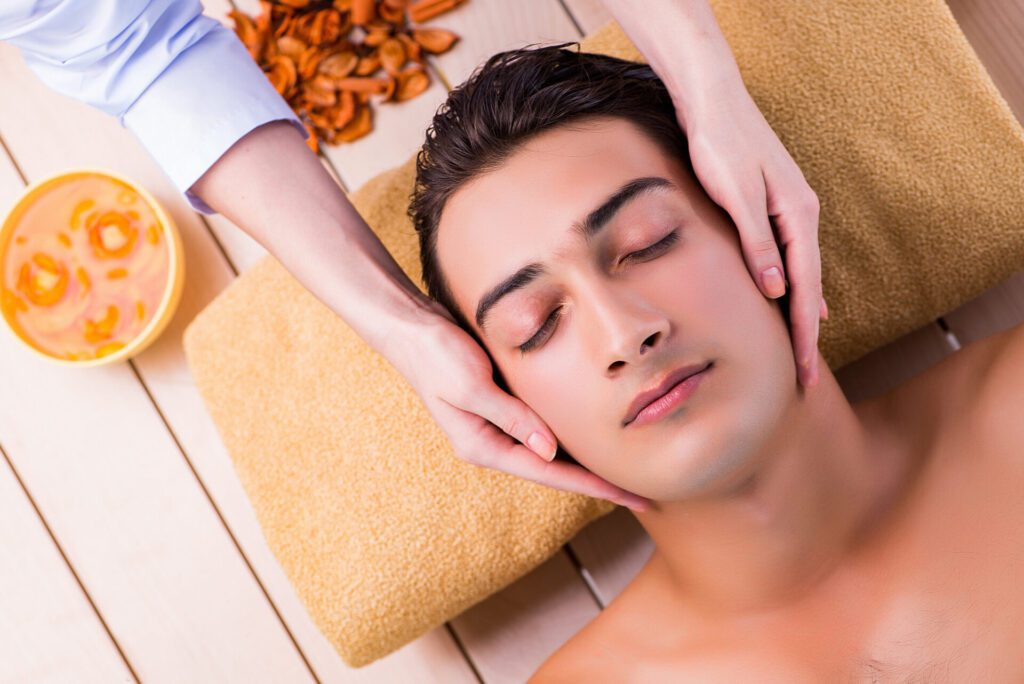
Stress massage isn’t just a mere touch; it’s an art, a technique, and a tool for relief. As the demand for mental relaxation soars, understanding various massage techniques becomes paramount.
- Benefits: Beyond physical relaxation, stress massage aids in tension reduction, anxiety alleviation, and combating depression.
- Techniques: From deep tissue to light, rhythmic strokes, techniques vary based on the individual’s needs.
- DIY vs. Professional: While self-massage has merits, sometimes, the expert touch is unparalleled.
Now, wouldn’t you love to get lost in a world where every touch makes you forget your worries? That’s the magic of stress massage!
7.1. Stress Massage Therapy: When Professional Help is Best
Ever wondered, “What massage is best for stress?” The answer isn’t always straightforward, but here’s a clue: sometimes, DIY doesn’t cut it.
- Expertise: A trained masseur knows stress massage techniques for relaxation that are hard to replicate.
- Depth: For tension reduction and deep relaxation, professionals know how to hit the right stress relief back massage points.
But when is it time to book that appointment?
- Chronic Pain: If stress manifests as continuous pain, pros can target the source.
- Mental Health: With rising concerns over anxiety and depression, professional massages can be therapeutic, complementing medical treatments.
7.2. Stress Relief Back Massage Points: Targeting the Source
Our back, quite literally, bears the burden of our worries. Knowing how to release this tension can be transformative. Ever felt knots in your back and wondered, “How do I tackle this?”
- Upper Back: Linked to shoulder and neck tension, often a result of poor posture.
- Lower Back: Stress here might be from physical strain or sedentary lifestyles.
There’s magic in understanding these stress relief back massage points. Be it self-massage for stress relief or a professional session, targeting these areas can be the key to unlocking pure bliss.
7.3. Anti-Stress Massage vs Swedish Massage: Knowing the Differences
In the universe of massages, two stars often cause confusion: Anti-stress massage and Swedish massage. So, what sets them apart?
- Techniques: While anti-stress massage techniques focus on relief and relaxation, Swedish massage employs long gliding strokes, usually for physical ailments.
- Purpose: Anti-stress massage targets mental relaxation, whereas Swedish focuses on overall physical well-being.
“Does massage help with stress?” Absolutely! But knowing the kind you need? That’s half the battle won. Remember, whether you’re seeking massage for anxiety or just a break from life’s hustle, the right choice makes all the difference.
8. Products to Enhance Stress Massage Experience
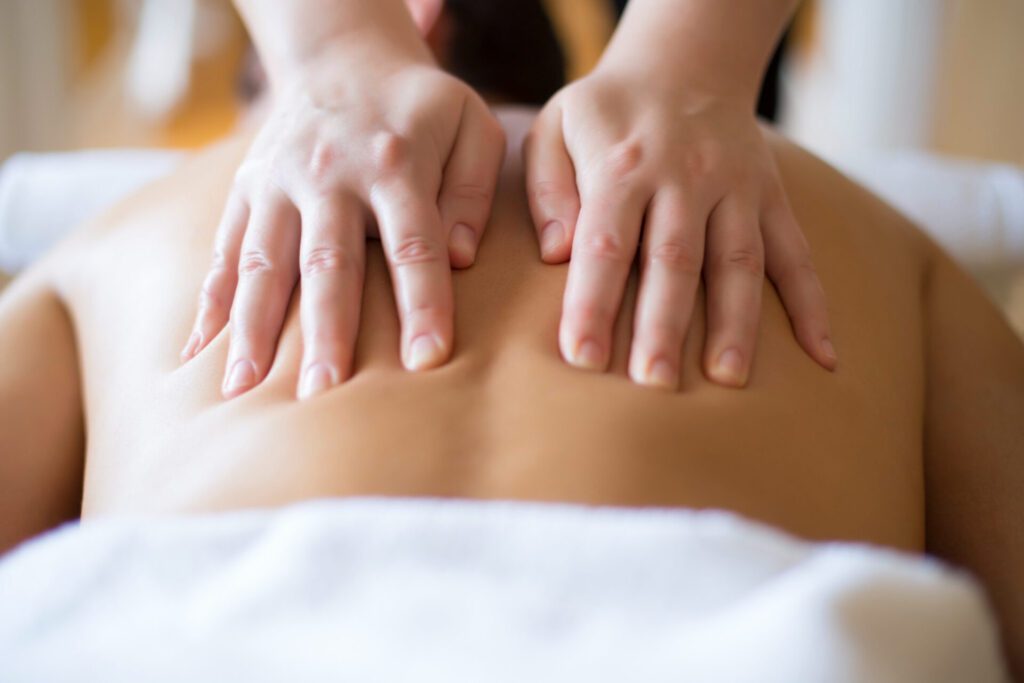
Massage is undeniably beneficial, but when combined with the right products, the relief and relaxation reach a whole new level.
- Essential oils such as lavender or chamomile can deepen relaxation. Their aromatic elements blend with massage techniques to offer dual benefits – tactile and olfactory.
- Heat wraps, applied prior to a massage, can pre-relax the muscles. This makes the massage more effective in tension reduction.
Next, you might ask, “What’s the best product that marries both oils and massage?” The answer? Himalaya Stress Relief Massage Oil.
8.1. Himalaya Stress Relief Massage Oil: How to Use
Have you ever come across the Himalaya Stress Relief Massage Oil and wondered, “How do I best utilize this for maximum relief?” You’re not alone.
- Start with a warm shower. This helps open the skin’s pores and prepares the body to absorb the oil.
- Apply the oil in a gentle, circular motion. Emphasize areas like the neck, shoulders, and back, where stress accumulates the most.
Moreover, the Himalaya brand is known for its trustworthiness. With this oil, you’re not only giving your body the luxury of relaxation but also the benefits of natural ingredients. But why stop at one oil? There’s a realm of stress massage oils awaiting discovery.
8.2. Stress Massage Oils: Benefits and Selection
Oils play a pivotal role in enhancing stress massage techniques for relaxation. But what makes them so special?
- They provide the necessary slip for smooth, gliding strokes.
- Certain oils have therapeutic properties. For example, eucalyptus oil can relieve sinus issues, while peppermint can re-energize.
But how do you choose the right one? Consider your desired outcome. If it’s relaxation, opt for lavender. For anxiety relief, chamomile works wonders. And if it’s depression you’re battling, rosemary can lift spirits.
Beyond oils, there are innovative aids designed to intensify the effects of stress massage.
8.3. Massage Aids: From Stress Buster Balls to Massage Chairs
Ever heard of stress buster balls? Or perhaps the growing fame of massage chairs? Both are ingenious tools that complement traditional stress massage techniques.
- Stress Buster Balls: These are handheld tools you can squeeze and manipulate. Not only do they relieve hand tension, but they also offer a sort of meditative release for the mind.
- Massage Chairs: Think of them as personal masseurs waiting on standby. They target pressure points, provide heat, and often come with modes designed specifically for tension reduction and relaxation.
So, if you’re ever searching for “stress massage near me,” perhaps consider investing in a massage chair. It’s a one-time investment for countless massage sessions at home!
To wrap up, stress massage is a balm for the body, soul, and mind. Its benefits span beyond the immediate. Whether you’re grappling with anxiety or depression, or simply want a slice of relaxation, the world of stress massage offers a plethora of options. Dive deep, explore, and most importantly, enjoy every moment of it.
Feeling tempted to indulge in a session soon? Or perhaps try the Himalaya Stress Relief Massage Oil? Go ahead, treat yourself. After all, in the bustling chaos of life, who doesn’t deserve a touch of relaxation?
9. Finding the Right Stress Massage Service
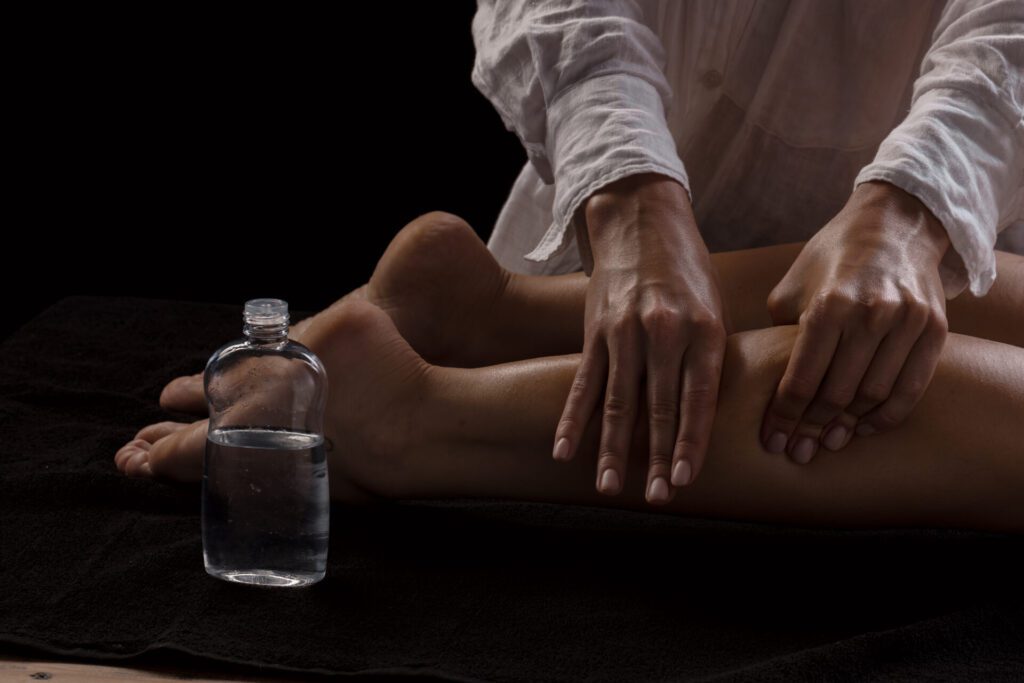
Sometimes, the search for the perfect stress massage can be almost as stressful as the tension you’re trying to alleviate. As more people turn to therapy to alleviate anxiety and depression, it’s essential to ensure you’re getting the most authentic and beneficial experience. How do you find the perfect balance of skill, technique, and environment?
- Consider recommendations from friends or family who swear by a particular masseuse or parlor.
- Pay attention to online reviews but always take them with a grain of salt.
- Visit the place in person; a clean, peaceful environment can speak volumes about the quality of service you’re likely to receive.
Have you ever typed, “Stress massage near me” into your search bar, only to be overwhelmed by the plethora of options? It’s no surprise given the increasing recognition of massage for stress and anxiety. However, not all services are made equal. Here’s what you need to know:
- Ensure therapists have proper certifications and are well-trained in stress relief techniques.
- Trust your intuition; if a place doesn’t feel right, it probably isn’t.
9.1. Stress Massage Near Me: Tips for Selecting the Best Service
The long list of benefits offered by stress massage therapy makes it a sought-after service. But, the key is to find a place that promises – and delivers – ultimate relaxation. Where to start?
- Be specific in your online searches. For instance, type “Best massage for stress and anxiety near me” instead of just “massage near me.”
- Visit more than one service before making a choice. Sometimes, it’s about the vibe and energy of a place more than just the list of services.
Tension reduction, mental clarity, and physical rejuvenation are just a few benefits of a good stress massage. But, with countless services popping up, the hunt can be daunting.
- Inquire about the range of techniques offered and the experience of the masseuse.
- Ask if they provide specific messages targeting anxiety or depression if that’s a significant concern for you.
9.2. Massage for Stress and Anxiety Near Me: Sifting Through Options
You’ve probably wondered, “What massage is best for stress?” amidst the sea of options available. Filtering through services might seem tedious, but it’s essential for the ultimate relief.
- Focus on services that highlight their expertise in stress massage techniques for relaxation.
- Don’t shy away from asking questions. For example, “How often should I get a massage for stress?”
Every therapy session is a personal journey. It’s not just about the hands that work on your muscles but also the environment, the oils used, and the methodology applied.
- Look for services that understand the difference between a mere relaxation massage and a stress relief massage.
- If they offer a “trial” or “first-time” session at a discounted rate, take advantage of it to gauge their expertise.
9.3. Making the Most of Your Stress Massage Session
Stress massage benefits aren’t just limited to the session itself. There are ways to prolong the effects and ensure you’re getting the best out of every minute.
- Always communicate. If a technique feels particularly good or, conversely, uncomfortable, let your therapist know.
- Engage in deep, rhythmic breathing. It aids in relaxation and allows better oxygen circulation.
After the massage, take a few moments to lie down, soaking in the feelings of relaxation and tranquility. This is your time.
- Drink plenty of water post-massage. It helps in flushing out any toxins released during the session.
- Schedule your sessions during a time of day when you’re least likely to be stressed or rushed. This ensures you can carry the calmness with you for longer.
Now that you’re equipped with knowledge, it’s time to embark on your journey to relief and rejuvenation. Remember, it’s not just about easing muscle tension but also about mental clarity and emotional well-being. Dive into the world of stress massage, and discover a more relaxed, happier you.
Ready to start your journey? Type “Stress massage near me” and begin your quest for ultimate relaxation.
10. Conclusion: Embracing Stress Massage for Ultimate Wellness

Modern life has, undoubtedly, provided us with immense conveniences, but it’s also brought along its fair share of stresses. Amid the daily hustle and bustle, stress massage stands out as a beacon of relief. Its wide array of benefits goes beyond just physical relaxation.
- Tension Reduction: The techniques used in stress massage work wonders in melting away muscular knots, leading to a soothing sensation throughout the body.
- Anxiety Alleviation: By focusing on pressure points linked to emotional well-being, such massages can significantly reduce feelings of anxiety.
- Depression Management: Regular sessions can lift your spirits, balancing the body’s chemistry and combating depressive feelings.
10.1. Reflecting on the Importance of Regular Stress Massage
The benefits of stress massage therapy aren’t merely fleeting moments of relaxation. When made a regular practice, its effects compound, offering long-lasting relief from the ailments of modern life.
- Strengthened Immunity: By reducing stress hormones, the body’s immune system operates more efficiently.
- Improved Sleep Patterns: A relaxed mind and body set the stage for deeper, uninterrupted sleep.
- Mood Enhancement: Regular stress massage sessions can boost the production of endorphins, our body’s natural “feel-good” chemicals.
Have you ever asked yourself, “What is stress massage?” Simply put, it’s an essential tool for mental and physical rejuvenation. By addressing muscular tension and promoting relaxation, it’s a therapy that’s pivotal for holistic well-being.
10.2. The Future of Stress Massage and Its Evolving Techniques
The world of stress massage is not static. As we deepen our understanding of the human body and its intricate networks, newer techniques are constantly being developed, leading to even more refined methods of relief.
- Integration of Technology: From apps guiding self-massage for stress relief to advanced equipment enhancing therapists’ precision, the future looks promising.
- Tailored Techniques: Expect more personalized massage plans, factoring in individual stress points and pressure preferences.
- Enhanced Training: Therapists will undergo more rigorous training, focusing on the intricacies of the human body and its stress responses.
Moreover, with increased awareness of mental health, stress massage will likely play a more pronounced role in holistic health practices. The question isn’t just “What massage is best for stress?” but also “How can massage be further optimized to cater to individual stress profiles?”
10.3. A Personal Call to Prioritize Well-being
Amid our daily responsibilities, it’s easy to neglect self-care. However, as the adage goes, “You can’t pour from an empty cup.” Investing in oneself, especially through therapies like stress massage, isn’t an indulgence but a necessity.
- Physical Rejuvenation: Beyond relaxation, consider the long-term benefits such as enhanced flexibility and reduced risk of injury.
- Mental Clarity: A relaxed body often houses a relaxed mind, leading to clearer thoughts and better decision-making.
- Emotional Balance: Regular massages can stabilize mood swings, ensuring emotional resilience in the face of challenges.
So, how often should you get a massage for stress? While individual needs may vary, incorporating this therapy into your routine, even if monthly, can significantly elevate your quality of life. After all, in prioritizing well-being, we’re not just ensuring our health, but also enriching every experience and interaction stemming from a place of holistic wellness.
Final Thoughts: In a world riddled with complexities and challenges, it’s crucial to have sanctuaries of relief and relaxation. Stress massage, with its myriad benefits, offers just that—a haven. As we move forward, let’s commit to prioritizing our well-being, and exploring therapies that nurture the body, mind, and soul. And remember, the best massage for stress and anxiety is the one that resonates with you. So, explore, experiment, and embrace the world of therapeutic touch.




